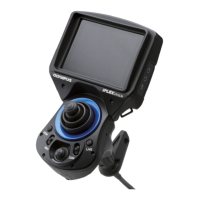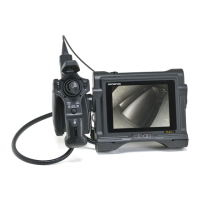How to enable the beep sound on Olympus IPLEX LX?
- FFelicia JordanSep 23, 2025
If the beep cannot be heard on your Olympus Analytical Instruments, check if “BEEP ON/OFF” in the “SETUP” menu is set to “OFF”. If so, set it to “ON.”

How to enable the beep sound on Olympus IPLEX LX?
If the beep cannot be heard on your Olympus Analytical Instruments, check if “BEEP ON/OFF” in the “SETUP” menu is set to “OFF”. If so, set it to “ON.”
Why my Olympus Analytical Instruments system cannot be turned on?
If your Olympus Analytical Instruments system is not turning on, verify the following: * Ensure the AC adapter or battery is correctly connected. * Confirm the power button on the main unit is set to the 'on' position. * Make sure you are using the designated AC adapter or battery.
How to fix the issue when the illumination does not light on Olympus Analytical Instruments?
If the illumination on your Olympus Analytical Instruments is not working, consider these potential causes: * Ensure the LIGHT button is activated. * Check that the optical adapter is properly attached. * Clean any dirt from the electrodes on the optical adapter or the insertion tube distal end. * If the LEDs on the distal end of the optical adapter are not working, replace the optical adapter.
What to do if an error message appears when a USB Flash Drive is connected to Olympus IPLEX LX Analytical Instruments?
If you receive an error message when connecting a USB Flash Drive to your Olympus Analytical Instruments, the issue could be: * The USB Flash Drive is not recommended for this system. To solve this, stop the inspection, turn the instrument off and then on again, and use a recommended USB Flash Drive. * A USB device other than a USB Flash Drive is connected. Try disconnecting all USB devices except the USB Flash Drive.
Why does the self-check trigger during use and display a message on Olympus IPLEX LX?
If the self-check function triggers during use and displays a message with an alarm on your Olympus Analytical Instruments, it indicates that the inside of the main unit was too hot. To resolve this, terminate the inspection, allow the instrument to cool down, and then turn the power back on.
Why does a message appear when increasing the light emitted on Olympus IPLEX LX?
If a message appears when increasing the light emitted to use the high beam on your Olympus Analytical Instruments (LX only), it indicates that the distal end of the insertion tube is too hot. Cool the distal end of the insertion tube to use the high beam.
Why is the color reproduction poor on Olympus Analytical Instruments?
If the color reproduction is poor on your Olympus Analytical Instruments, the white balance might be set improperly. Try re-adjusting the white balance.
Why is the image noisy on Olympus Analytical Instruments?
If the image appears noisy on your Olympus Analytical Instruments, the automatic brightness control may be set erroneously. Perform the [BRT] lever operation to configure the proper setting.
Why is the illumination dim on my Olympus Analytical Instruments?
If the illumination appears dim on your Olympus Analytical Instruments, consider these factors: * The optical adapter tip is dirty. Clean it with a clean piece of gauze or cotton swab. * Extended use under high ambient temperatures causes decreased light emissions. In this case, replace the optical adapter.
What to do if the Olympus IPLEX LX Analytical Instruments system cannot be turned off?
If your Olympus Analytical Instruments system cannot be turned off, it suggests that the main unit is damaged. To turn off the power, remove the AC adapter or the battery from the main unit.
| Type | Industrial Videoscope |
|---|---|
| Light Source | LED |
| Video Recording | Yes |
| Still Image Capture | Yes |
| Model | LX Series |
| Image Sensor | CMOS |
| Portability | Portable |
| Display | LCD |
| Insertion Tube Diameter | 4.0mm |
Details about Rating plate A, showing its location and model example.
Details about Rating plate B, showing its location and electrical specifications.
Displays warning symbols and instructions related to safety precautions.
Defines the primary purpose and scope of the instrument's application.
Emphasizes the importance of reading and understanding the manual for safe operation.
Advises checking compatibility of ancillary equipment to prevent damage.
States that the instrument contains no user-serviceable parts and prohibits disassembly.
Explains the meaning of signal words like DANGER, WARNING, CAUTION, and NOTE.
Lists critical safety information and potential hazards associated with instrument use.
Provides crucial safety guidelines and procedures for battery operation and charging.
Details the various models and their specifications within the IPLEX LX/LT series.
Outlines the procedure to verify all items are present and undamaged after unboxing.
Identifies and labels the main components of the IPLEX LX/LT system.
Details the parts and operational features of the instrument's main unit.
Explains the various buttons, levers, and joysticks on the control unit.
Describes the components and purpose of different optical adapters.
Provides instructions for safely moving and handling the instrument's case.
Step-by-step guide for safely removing the instrument components from the case.
Explains different configurations for positioning the main unit during use.
Details how to adjust and utilize the instrument's handle for stability and viewing.
Covers procedures for connecting and using both battery and AC adapter power sources.
Step-by-step instructions for connecting the instrument to an AC power source.
Procedures for checking the insertion tube for damage or defects before use.
Guidance on checking the O-ring for damage, which is crucial for waterproofing.
Instructions to check the control unit and cable for any damage or wear.
Procedures for inspecting the optical adapter's optics and screw threads for cleanliness and damage.
How to check the LCD screen for cracks or other physical irregularities.
Explains how to attach and detach the control unit to the main unit for carrying or use.
Instructions for securing the shoulder strap to the main unit for carrying.
Details on how to attach and remove the optical adapter case holder.
Guides the user through the process of powering the instrument on and off.
Instructions for verifying the quality and clarity of the displayed observation image.
Explains the meaning of various icons and indicators shown on the LCD screen.
Explains how to select the preferred language for menus and system text.
Details the procedure for setting the system's date and time correctly.
Procedure to confirm the correct optical adapter is attached and recognized.
How to verify and adjust the illumination brightness for clear viewing.
Describes how to calibrate the color balance for accurate image representation.
Verifies the smooth operation of the insertion tube's bending mechanism.
Instructions to test the function that locks the angulation position.
Step-by-step instructions for correctly inserting the insertion tube into an object.
Guides on how to safely retract the insertion tube from an object.
Covers image adjustments like freezing, zooming, and brightness control.
Procedure to capture and hold a single static image for detailed examination.
Explains how to magnify the observed image using the digital zoom feature.
Covers GAIN mode switching and automatic brightness adjustment using the BRT lever.
Explains how to switch to a high-sensitivity monochrome display for low-light conditions.
Instructions for preparing and capturing still and moving images.
Steps to format the USB flash drive and prepare for image capture.
Detailed steps for capturing a single still image and saving it to the drive.
Instructions for capturing video footage and saving it to the USB drive.
Guides on how to view previously recorded still and moving images.
Method to instantly view the last recorded image in full screen.
How to browse recorded images using thumbnails and select one for playback.
Explains how to navigate and use the system's menu interface.
Step-by-step guide to accessing and executing menu functions.
Demonstrates common menu settings using the SETUP menu as an example.
Details functions available on the live and frozen image display screens.
Overview of menu options available during live or frozen image display.
Explains how to change the system's display language.
Covers managing and viewing recorded images via thumbnail and retrieval screens.
Lists menu options for managing images on the thumbnail/retrieve screen.
Instructions for removing unwanted images from the USB flash drive.
Guides on creating and managing folders for organizing recorded images.
Procedures for copying or moving image files between folders on the USB drive.
How to rename image files for better organization and identification.
Steps to format the USB flash drive, which erases all data.
Instructions on how to view PDF documents directly on the instrument.
Steps to prepare PDF files and the USB drive for display on the instrument.
Guides on how to select and view PDF files from the USB drive.
Explains how to perform measurements using stereo imaging techniques.
Discusses factors affecting measurement accuracy and recommendations for improvement.
Outlines the sequence of steps required to perform stereo measurements.
Detailed instructions for securely mounting the stereo optical adapter.
Procedures to verify the correct stereo optical adapter is attached and recognized by the system.
Guides on registering and setting up new stereo optical adapters.
Tips and considerations for obtaining optimal measurement image quality.
Explains the layout and elements of the stereo measurement display interface.
Details the menu options available within the stereo measurement interface.
Details the steps and methods for conducting stereo measurements.
Describes how to choose between Distance, Point to Line, and Depth measurement modes.
Explains how to measure the distance between two points on the screen.
Method for measuring distance from a point to a reference line defined by two points.
Procedure to measure distance from a point to a reference plane defined by three points.
How to measure total length of multiple lines or area of a closed figure.
Explains how measurement results and object distance are displayed on screen.
How to clear and re-enter measurement points if specified incorrectly.
Procedure to restart the entire measurement point specification process.
Verifies corresponding points and displays object distance at the cursor position.
Provides guidance when automatic matching of points fails or is difficult.
Instructions for saving images with measurement results.
Procedures for safely closing the measurement function and returning to the previous screen.
Troubleshooting tips for improving measurement accuracy when results are inconsistent.
How to use spot ranging to measure the distance from the scope tip to the object.
Procedure to select the appropriate optical adapter for object distance measurement.
Steps to perform object distance measurement using the live or frozen image.
Guides on accessing and viewing recorded images via a computer.
Instructions for opening and viewing IPLEX LX/LT images using the provided software.
How to check the current battery charge level and its indicators.
Step-by-step instructions for safely removing and installing the battery.
Procedures for cleaning various parts of the instrument to maintain performance.
Guidelines for cleaning the insertion tube to prevent staining and corrosion.
How to clean the LCD screen gently without causing damage.
Instructions for cleaning the exterior surfaces of the main and control units.
Instructions on how to properly store the equipment in its carrying case.
Details on how to secure the carrying case during transport.
Guidelines for storing the equipment safely under suitable environmental conditions.
Provides guidance on identifying and resolving common instrument issues.
Lists common error messages, their causes, and recommended solutions.
Addresses common operational problems not related to specific error codes.
Instructions and precautions for sending the instrument for service or repair.
Specifies the conditions (temperature, humidity, pressure) under which the instrument can operate.
Lists technical details beyond operating environment, like angulation and dimensions.
Details the dimensions, weight, and contents of the instrument's carrying case.
Information on regulatory compliance and standards applicable to the product.
Legal information regarding the software licenses used in the product.
Technical data for various optical adapters, including field of view and dimensions.
Visual overview of the system components and their interconnections.











